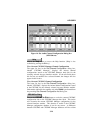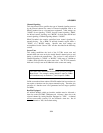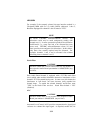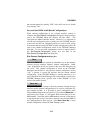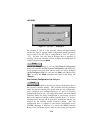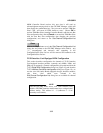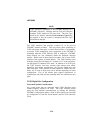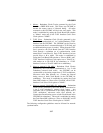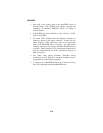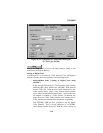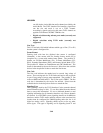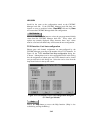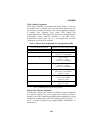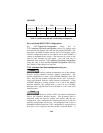
LBI-39224
3-37
1. Master - Redundant Clock Circuits generated by the Clock
Board in a FREE RUN mode. This allows any CEC/IMC to
become the master source of Network timing. All nodes
connected to this CEC/IMC will be in the slave mode. This
mode is established by setting the Clock Board DIP switches
to "Master" mode and all the T1/E1 Interface Cards' Slave
Clock option to "NONE."
2. T1/E1 Slave - Redundant Clock Circuits generated by the
Clock Board synchronized to 1 (or 2 with redundancy) T1/E1
Interface into the CEC/IMC. The CEC/IMC can be slaved to
an external node that is connected through a T1/E1 link, and
no additional timing source is needed. Timing from the T1/E1
line is passed to the Clock Board from the T1/E1 Interface
Cards through a redundant set of synchronization clocks
named Slave A and Slave B. Each T1/E1 Interface Card can
provide Slave A, B or A&B. This mode is established by
setting the Clock Board DIP switches to "Slave to 8kHz" and 1
T1/E1 Interface Card Slave Clock option set to "SLAVE A,"
with another set to "SLAVE B" for redundancy, or 1 T1/E1
Interface Card set to "SLAVE A&B" for no redundancy.
3. Slave to external 1.544 MHz - Redundant Clock Circuits
generated by the Clock Board synchronized to 1 (or 2 with
redundancy) external clock source. Any CEC/IMC can be
synchronized to the timing output from a T1/E1 multiplexer,
microwave radio, fiber network, etc. Connect the external
timing source to both Clock Boards in the CEC/IMC for
redundancy. This mode is established by setting the Clock
Board DIP switches to "Slave to Ext. 1544 kHz" and all T1/E1
Interface Cards' Slave Clock option to "NONE."
4. Slave to external 2.048 MHz (E1 mode only) - Redundant
Clock Circuits generated by the Clock Board synchronized to
1 (or 2 with redundancy) external clock source. Any
CEC/IMC can be synchronized to the timing output from a
T1/E1 multiplexer, microwave radio, fiber network, etc.
Connect the external timing source to both Clock Boards in the
CEC/IMC for redundancy. This mode is established by setting
the Clock Board DIP switches to "Slave to 2048 kHz" and all
T1/E1 Interface Cards' Slave Clock option to "NONE."
The following configuration guidelines must be followed for network
synchronization:



